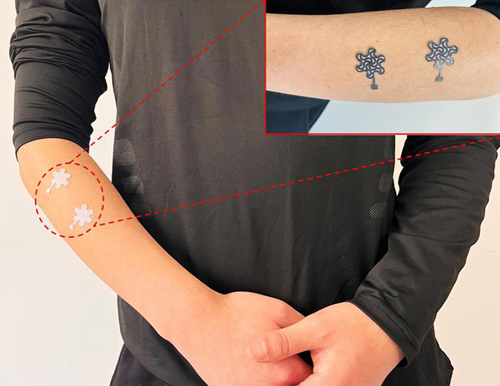
Researchers at Penn State have developed a low-cost, wearable sensor using pencil-on-paper technology. This approach involves depositing graphite (pencil ‘lead’) on paper that has been treated with sodium chloride, to create a conductive, low-cost sensor. Previously, these researchers had developed such sensors to detect moisture and even used them to develop a smart diaper (yes, really). However, they have now developed a hydrophobic version of the sensor that is not affected by water to create a skin-worn device that can measure a variety of health data, including assessments of gas molecules, temperature, and electrical signals.
Who says that wearable health sensors are only for the rich? It doesn’t come much simpler (or cheaper) than a pencil drawing on paper, and yet this is the basis for this wearable technology designed by researchers at Penn State. Previously, the technology was developed as a moisture sensor, but in this latest version the researchers have adapted the sensor for use as a general skin-worn health sensor.
“In this case, we are looking to measure gas molecules, temperature and electrical physiological signals,” said Huanyu “Larry” Cheng, a researcher involved in the study. “If we get interference from the moisture or rapid humidity, the signal and mechanical robustness will be compromised. That’s why we designed a superhydrophobic coating, making the sensor practically waterproof.”
The new sensor employs a silica hydrophobic coating to repel water, and the researchers also made it flexible so that it can conform to the skin without incurring damage. So far, the sensor can detect temperature, gas molecules, and it can also take electrophysiological measurements, which could be useful in assessing cardiac activity, brain activity, and muscle activity.
“With this sensor, you don’t need bulky equipment,” said Li Yang, another researcher involved in the project. “We use low-cost manufacturing approaches to make them accessible. The sensor is made of graphite material exfoliated from a pencil. So, the pencil material is really the sensing material because it’s a conducting material.”
The low-cost nature of the technology may make it useful for monitoring large sections of the population for public health initiatives. “In general, we are interested in the population health,” said Cheng. “So, with this low-cost manufacturing process and sensor accessibility, we are hoping we can provide this to a really large population, and then collect information about the variation between individuals to be able to establish a baseline, according to the patient population in different geographic locations or in different populations.”
Study in journal Chemical Engineering Journal: Superhydrophobic, stretchable kirigami pencil-on-paper multifunctional device platform
Via: Penn State
Source: medgadget.com




